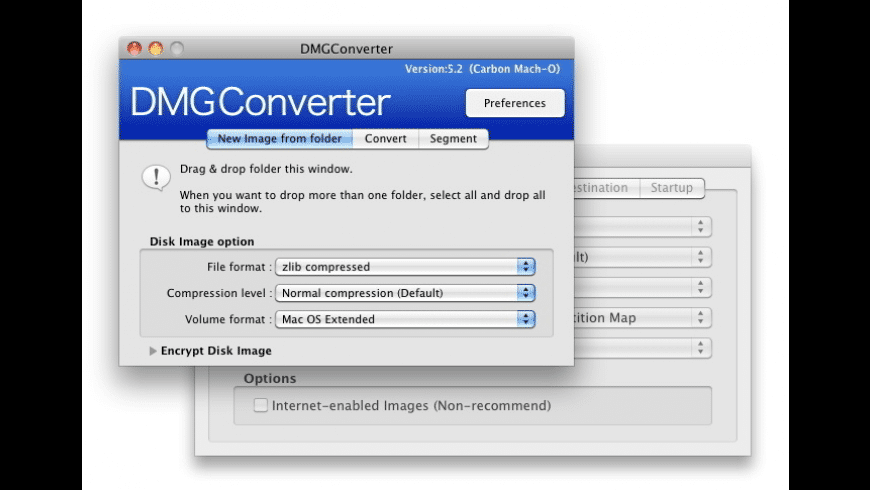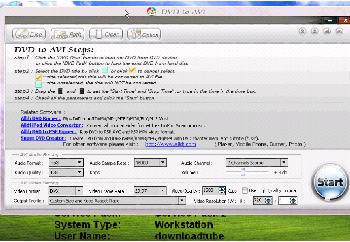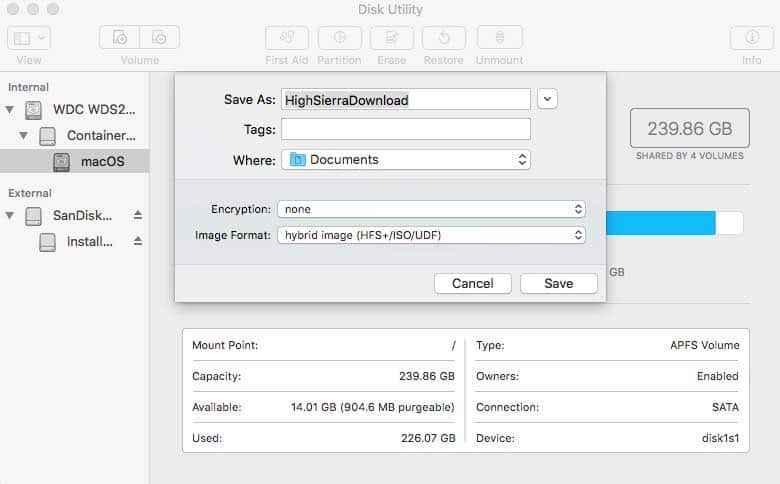Here are ways that you can convert dmg files to iso files on Mac OSX, Windows and Linux.
Batch Excel File Converter is a fast and efficient tool to convert multiple Excel files (xls or xlsx) into many other formats like html, txt, csv, dif, xps, pdf etc. It can convert thousands of Excel files in a single batch process with fast speed.
- I had some vhs tapes converted to dvds. I can play them but I’d like to download them so they can be edited in iMovie. Is there a way or a program that allows Universal Disk Format to be downloaded to the hard disk and used in iMovie?
- Jul 15, 2019 It comes with.iso extension but sometime.img extension is also used in some cases like Microsoft Dreamspark. The file which doesn’t contain ISO 9660 but have UDF which comes with.udf extension. It is sector by sector copy of data. Convert.iso to.dmg on mac What is ISO FILE. The full form of ISO is International Organisation for.
Before we start, let’s download a dmg file from the public domain. I found one on Apple’s article about The XMLHttpRequest Object website while I was learning Ajax and that can be downloaded from this link. This is just a 150KB dmg file and will be handy if you want to have something to test with while you’re following this tutorial.
How To Convert DMG Files To ISO Files On Mac
Method 1: Using the Mac terminal

1. Open a terminal window from Finder > Applications > Utilities > Terminal.
2. Assuming that you have a disk image called apple.dmg in the current directory, type
hdiutil convert apple.dmg -format UDTO -o apple.iso
3. This will actually create a file called image.iso.cdr in the current directory (even though we asked for the output to be image.iso). This file can be safely renamed to image.iso, copied to a Windows server or machine, and burned with your CD/DVD burner of choice.
Generally, the command hdiutil can be used this way:
hdiutil convert /path/to/filename.dmg -format UDTO -o /path/to/savefile.iso
Method 2: Using DMGConverter (freeware)
1. DMGConverter is a disk image (.dmg, .cdr, .iso) creation and conversion tool which is simple and easy to use. It is a very useful tool for the collective processing of more than one file and every folder, and it can deal with all the fundamental processing with the drag & drop of the file/folder. For Mac Only.
How To Convert DMG Files To ISO Files On Windows
This is for Windows users who might have downloaded a dmg file and wondering how to extract the content, or not even knowing how and what to do with the dmg file. I’ve been there at a certain stage. the sharewares mentioned are fully functional and allows you to use the “convert dmg to iso” function even when it’s not registered yet.

Method 1: Using MagicISO (shareware)
1. Download MagicISO, install and run program.
2. Click to open dmg file.
3. Click to open “Properties” dialogs.
4. Uncheck Apple HFS and Apple HFS+
5. Check “ISO 9660” “Joliet” “UDF”
6. Click OK
7. Click to save as to iso image, or click to burn to CD/DVD without saving.

Udf Converter For Mac Download
Method 2: Using UltraISO (shareware)
UltraISO basically does the same thing, but it can save you time from doing step 3 to 6 compared to method 1.
Alternative Solutions: dmg2iso (freeware) and isobuster (shareware)
I’ve heard and read that some people had been able to convert dmg files into iso files using dmg2iso (freeware). I’ve tried dmg2iso, converted my dmg file to iso without problem, but the converted iso file is corrupted and can’t be open by any tools (Daemon Tools, Alcohol, MagicISO, UltraISO and ISOBuster) that I’ve tested. It might work for you, but no guarantees.
ISOBuster is pretty similar to MagicISO and UltraISO. But too bad that the function to “convert dmg to iso” is restricted and won’t be functional until you buy the software.
How To Convert DMG Files To ISO Files On Linux
Free open-source app AcetoneISO provides a great deal of disc image manipulation tools not found in the Gnome desktop. It can mount/unmount a variety of image formats (ISO, DMG, MDF, NRG, BIN, NRG), convert images, create, encrypt, and decrypt ISOs, play DVDs (with the required codecs installed), and much more. It is particularly useful for mounting proprietary formats found in Windows and Mac boot discs. AcetoneISO is a one-stop-shop for all of your CD/DVD image manipulation needs, and is a free download for Linux only. This works on all famous linux distro such as Ubuntu, SUSE, Fedora, Mandrake, and Redhat.
Udf Converter For Mac Os
So there you have it, and this should get you covered no matter what operating system you’re using.

Pdf Converter For Mac Os
Extended Attribute Files
Extended Attribute Files : The UDF File System can contain Extended Attribute Files. These files have the exact same name as the file they are associated with. Windows itself and Windows applications ignore these files but other systems often use them. E.g. Macintosh uses associated files to store the 'Resource Fork' in. Be aware that Mac 'Resource Forks' don't take up the complete associated file-size, instead, 'Resource Forks' start at a certain offset inside the extended attribute files. IsoBuster finds associated files and automatically keeps track of them when they contain Mac properties and a Resource Fork as part of the transparent Mac support.
List Extended Attribute Files as separate files: You can also set IsoBuster to display all extended attribute-files as separate files. This is independent from their content. Also non-Mac / non-Resource-Fork extended-attribute files are listed then.
Add .[EA] to the Extended Attribute Files' names : Because extended-attribute files have the same file-name as the file they are associated with, they cannot be extracted (copied) to a Windows system in the same folder, as Windows does not accept two files with the same name in one folder. To be able to work around that easily and to be able to extract all files of one folder to a Windows system folder, you can have IsoBuster add an .[EA] extension to the file name, to give the name a unique character.
List Mac Resource Forks as separate files: You can also set IsoBuster to display all Resource forks as separate files. So, next to possibly displayed .EA files you also get Resource Fork files which are in fact physically located inside the .[EA] files. But this way you get to see the start address of the Resource Fork, the true length of the Resource Fork, the byte offset in the first block etc. Furthermore you get the unique ability to extract the 'true' Resource Forks from the disc without having to 'peel open' the extended attribute files first.
Add .[R] to the Resource Forks' names : Because Resource Forks have the same file-name as the file they are associated with (The Data Fork), they cannot be extracted (copied) to a Windows system in the same folder, as Windows does not accept two files with the same name in one folder. To be able to work around that easily and to be able to extract all files of one folder to a Windows system folder, you can have IsoBuster add an .[R] extension to the file name, to give the name a unique character.
Extracting Resource Forks as seperate files is basically not needed for anything except for engineering purposes. E.g. to be able to inspect the content and properties (e.g. size) of the Resource Fork; for designers, developers, engineers or technical people. IsoBuster transparantly takes care of what to extract to a Windows system, in case the file has Mac Properties, so that the file is usable on the Windows system. IsoBuster also extracts Mac Resource forks to an NTFS formatted Hard Disk, and stores them in Alternate Data Streams. These streams are not visible to the user browsing the file system with explorer, but they are there. When you decide to extract files as MacBinary files, all Mac content is preserved, so that files can be exchanged on non Mac systems but when they are taken to a Mac System, Mac is able to re-create the two Forks and special Mac properties. MacBinary files are not understood by Windows, so can generally not be opened with any software, yet they are ideal for exchange purposes when files eventually need to end up on Mac systems again.
Extract Resource Forks and Properties
Extract files with Mac properties as MacBinary files : Click here for an explanation on MacBinary files.
Extract Resource Forks and Properties to NTFS Alternate Data Streams :
Alternate Data Streams in an NTFS file system are a way to store extra metadata for a file, not in the file body itself, but in a stream that is attached to the file. In fact, these Alternate Data Streams resemble Mac 'Resource Forks' in this respect. IsoBuster is able to convert the Resource Forks, that are stored in the UDF file system, to NTFS Alternate Data streams, in a way that a Mac, accessing the NTFS partition, is able to understand and use the Resource Forks and other Mac specific Properties again.
Scan options (normal mounting of discs)
Stream support